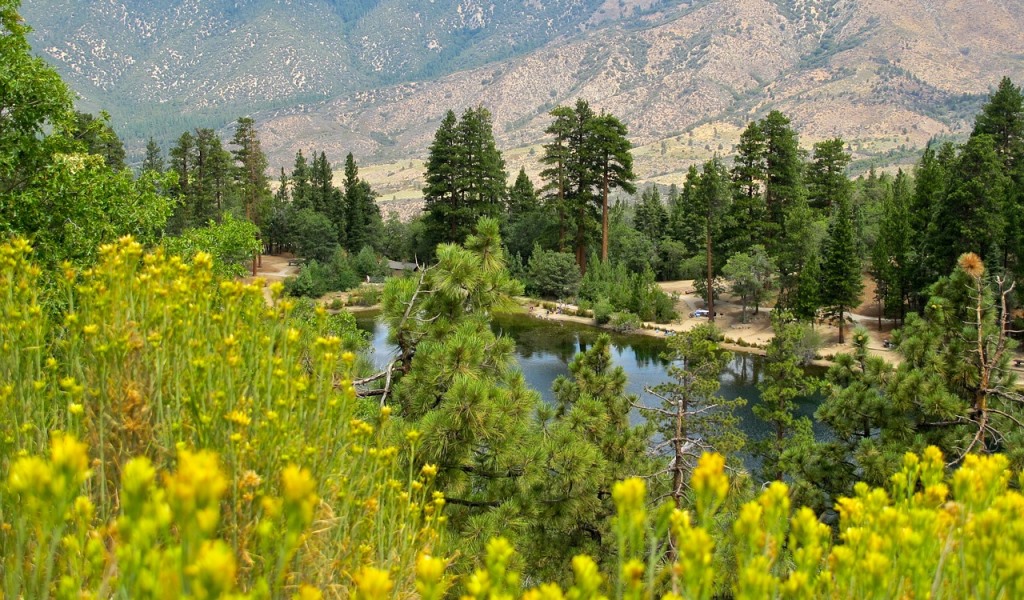Reforestation, watershed restoration, rural community reconstruction and climate resilience in the United States all got a major funding boost on January 21, 2022.
That was when U.S. Vice President Kamala Harris and U.S. Agriculture Secretary Tom Vilsack announced $1.36 billion in disaster relief funds for the USDA Forest Service to support post-disaster recovery and restoration in states across the country.
The funding includes nearly $600 million for recovery efforts in California following the historic, devastating 2020 and 2021 fire years.
The Forest Service will use these recovery dollars for hazardous material cleanup, reforestation, watershed restoration, and infrastructure repair including for trails, roads, bridges and facilities.
The funding will target communities and Tribes hardest hit by wildfires to mitigate impacts, address hazards, and support plans for recovery.
Additional projects will focus on reforestation and restoration, including to collect cones and seeds, increase tree nursery production, and provide tree seedlings and technical assistance to landowners, Tribes, and communities to restore burned areas. Projects will also support communities recovering from hurricanes, including in the South and Southeast.
“I am pleased to join the Vice President in announcing over a billion dollars in funding that will bolster the Forest Service’s efforts to help our communities recover from the devastating impacts of wildfires and hurricanes,” said Secretary Vilsack.
“States are experiencing more frequent and intense wildfires that pose a serious threat to communities, property and lives, as well as natural treasures like our forests. Hurricanes and other extreme weather events are also impacting growing numbers of people and communities. By funding projects like hazardous material cleanup, infrastructure repair, reforestation and more, these dollars will make an important difference when and where they are needed most. Before, during and after disasters, USDA is committed to being a partner across ownership boundaries to respond to climate change and build more-resilient communities,” he added.
Since taking office, the Biden-Harris Administration has put an unprecedented focus on helping communities mitigate, prepare for, respond to, and recover from wildfires and other disasters, including through the historic investments in the Bipartisan Infrastructure Law signed by President Biden on November 15, 2021.
As climate change increasingly fuels hotter, drier, and longer wildfire seasons, and as we see more extreme weather events around the country, proactive and preventative measures become even more essential. USDA says it is committed to working across land ownership boundaries to reduce risks before disasters occur.
Building on this announcement of the Forest Service’s 10-year strategy and implementation plan for confronting the wildfire crisis, USDA also announced more than $48 million of investments by the Forest Service and Natural Resources Conservation Service (NRCS) this year through the Joint Chiefs’ Landscape Restoration Partnership for projects that will mitigate wildfire risk, protect water quality, improve wildlife habitat, restore forest ecosystems and ultimately contribute to USDA’s efforts to combat climate change.
The Joint Chiefs’ Landscape Restoration Partnership enables NRCS and the Forest Service to collaborate with agricultural producers and forest landowners to invest in conservation and restoration at a big enough scale to make a difference.
“The Joint Chiefs’ Landscape Restoration Partnership is an excellent example of what we can accomplish with our partners when we manage the landscape as a whole,” continued Vilsack.
“Wildfires have no boundaries, and neither should our efforts to reduce wildfire risk and enhance the resilience of our forests, communities, water supplies and working lands. These Joint Chiefs projects are excellent examples of how agencies can work together and use targeted funding to achieve dramatic conservation improvements that benefit natural resources, build drought resiliency and address the climate crisis,” he concluded.
Congress recently recognized the value of this important USDA program by making it permanent in the Bipartisan Infrastructure Law, signed by President Biden.
This year, the Forest Service and the NRCS will invest in 41 projects, including 17 new projects, bringing together agricultural producers, forest landowners, and national forests and grasslands to improve forest health using available Farm Bill conservation programs and other authorities.
$15.3 million went to those 17 new projects, including:
Arizona
1) Northern Arizona Habitat Restoration and Wildfire Risk Reduction
2) Catalina-Rincon Restoration and Fuels Mitigation
California:
1) Big Flat Community Protection
2) Butte Valley South Landscape Restoration
Colorado: Southern Front Range Watershed
Idaho
1) Wood River Valley Forest Health & Wildfire Resilience
2) Scattered Lands Hazardous Fuels
Montana
1) Connecting Fuels Treatments in the Salish Mountains and Whitefish Range
2) Fire Adapted Bitterroot (FAB)
3) Gallatin Valley Resiliency and Watershed Health
4) Libby Surround Stewardship
North Carolina: Uwharries to Sandhills Landscape Collaborative
New Mexico: Bear Creek to Signal Peak
Nevada: Santa Rosa-Paradise Restoration
Virginia: Eastern Divide Restoration
Wyoming: Valleys and Headwaters Restoration
Hawaii: Hawaii Island Wildfire Mitigation and Support
Through these new three-year projects, landowners will work with local USDA experts and partners to apply targeted forestry management practices on their land, such as thinning, hazardous fuel treatments, fire breaks and other systems to meet unique forestry challenges in their area.
USDA is also investing $33 million in 24 existing projects. Since the program began more than eight years ago, USDA has invested more than $286 million in 110 projects which focus on areas where public forests and grasslands intersect with privately owned lands. Since 2014, these projects have delivered important forest and rangeland funding to 42 states and Puerto Rico.
The funding was announced during a visit to the San Bernardino National Forest in California.
Photo of San Bernardino National Forest by nightowl from Pixabay.

